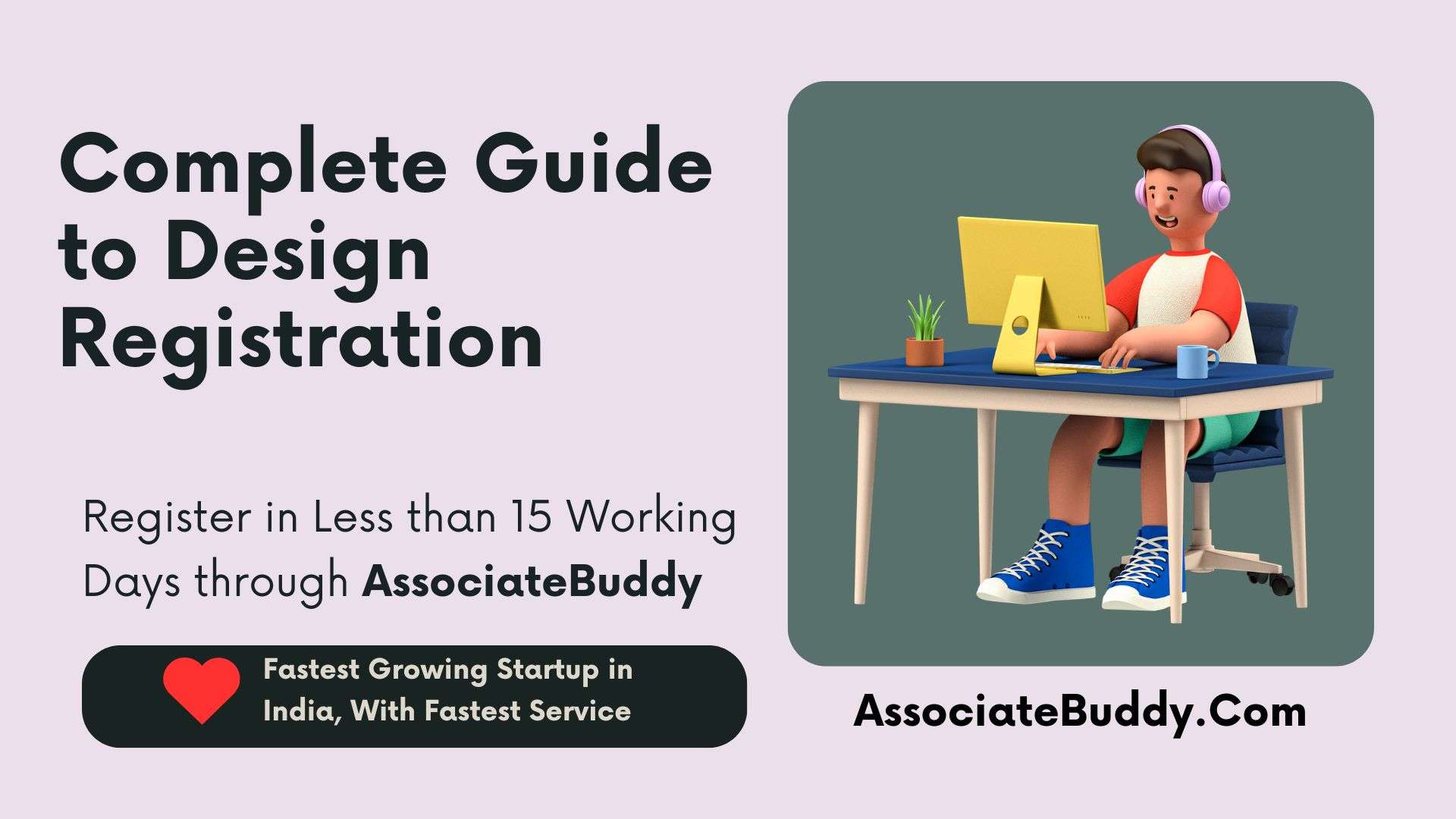Table of Contents
Introduction
For companies and people looking to safeguard the distinctive visual components of their products, design registration is an essential procedure. In the current competitive market, protecting a product’s visual qualities might give it a big advantage. This article explores the complexities of design registration, detailing the required paperwork, advantages, and stages. It also emphasizes the importance of Associate Buddy in streamlining the process.
What is Design Registration?
One type of intellectual property protection that concentrates on a product’s outside is design registration. This encompasses characteristics that give a product its unique visual identity, such as shape, arrangement, pattern, and adornment. A design’s owner can gain exclusive rights to use it, prohibiting others from duplicating or mimicking it for a set amount of time—typically ten years, with the possibility of an additional five years—by registering the design.
Documents Required for Registering a Design
To successfully register a design, several documents are needed:
1. Application Form : Duly filled application form specifying the applicant’s details and design particulars.
2. Representation of the Design : Clear illustrations or photographs showing different views of the design.
3. Statement of Novelty : A statement highlighting the unique aspects of the design.
4. Power of Attorney : If the application is filed through a representative.
5. Priority Document : If priority is claimed based on an earlier filed application in another country.
6. Class and Sub-class : According to the Locarno Classification, the international classification system for industrial designs.
Essential Licenses and Registrations for Design Registration
Design registration may involve several key licenses and registrations:
1. Trademark Registration : Protects the brand name or logo associated with the product.
2. Patent Registration : If the design includes innovative functional aspects.
3. Copyright Registration : Protects any artistic works incorporated into the design.
4. Industry-Specific Licenses : Depending on the product, additional industry-specific licenses may be required.
Advantages of Design Registration
Registering a design offers numerous benefits:
1. Exclusive Rights: Grants the owner the sole authority to utilize and profit from the design.
2. Legal Protection: Guards the owner’s investment by prohibiting unapproved duplication or copying.
3. Market Position: By setting the product apart from rivals, it strengthens its market position.
4. Commercial Value: Increases the product’s value and appeals to investors and prospective customers.
5. Licensing Opportunities: Provides the owner with the option to license the design in order to generate extra income.
Disadvantages of Design Registration
While beneficial, design registration has its drawbacks:
1. Cost: The registration procedure may be costly, especially if legal counsel is needed.
2. Time-Consuming: It can take a long time to finish, frequently several months.
3. Limited Protection: Protection does not extend to practical components of the design; it is restricted to the appearance of the design.
4. Maintenance: To keep the registration valid, regular maintenance and renewal fees are needed
Registering a Design Online through Associate Buddy
Associate Buddy simplifies the design registration process through its comprehensive online platform. Here’s how:
1. Expert Guidance : Provides expert consultation to ensure all documents and requirements are met.
2. Efficient Filing: Handles the entire filing process efficiently, reducing the time and effort required from the applicant.
3. Regular Updates: Keeps clients informed about the status of their application through regular updates.
4. Post-Registration Support: Offers ongoing support to manage renewals and any legal issues that may arise.
5. Affordable Packages: Provides cost-effective packages tailored to different business needs, making design registration accessible to all.
Compliances for Design Registration
To maintain design registration, compliance with certain regulations is necessary:
1. Renewal: Designs need to be renewed every ten years to maintain protection.
2. Usage: The design must be used consistently as registered; any modifications might require a new application.
3. Legal Disputes: Promptly address any legal disputes or infringement issues to protect the design rights.
4. Record Keeping: Maintain accurate records of the design and its usage for future reference.
Conclusion
A product’s visual distinctiveness must be protected, and design registration offers major financial and competitive benefits. Even with its difficulties, the advantages greatly exceed the disadvantages, particularly when using Associate Buddy’s shortened procedure. Whether you are a company or an individual designer, Associate Buddy’s experience and effective services will help you easily obtain your design registration and guarantee that your intellectual property is adequately safeguarded in the industry.
For more information on how Associate Buddy can assist with design registration, visit Associate Buddy


